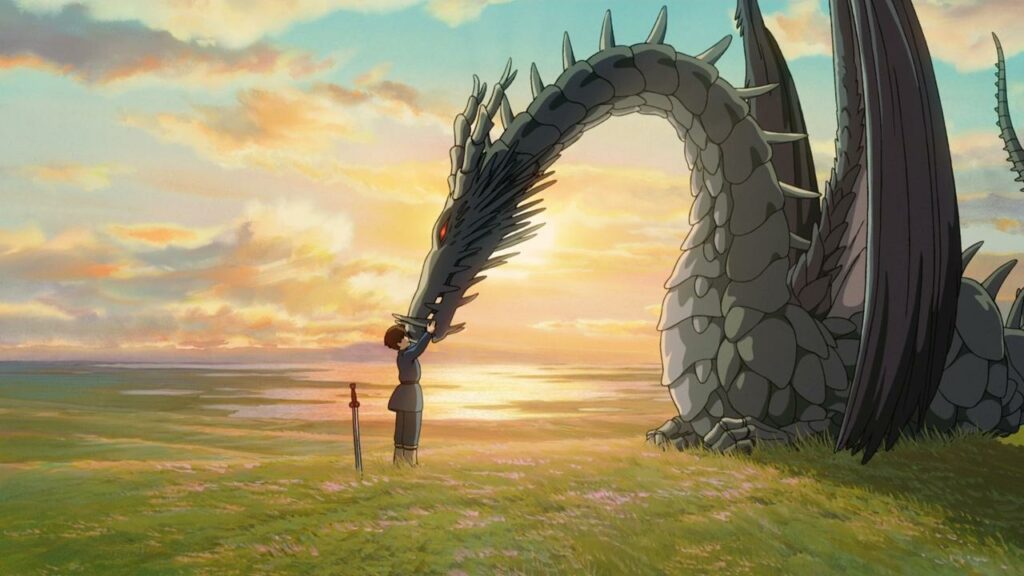By Zoe Crombie. A gorgeously illustrated guide to stories, characters, and cultures of the films of the beloved studio, An Unofficial Guide to the World of Studio Ghibli isn’t just a book with a mouthful of a name. It’s...
By Zoe Crombie.

A gorgeously illustrated guide to stories, characters, and cultures of the films of the beloved studio, An Unofficial Guide to the World of Studio Ghibli isn’t just a book with a mouthful of a name. It’s a wonderfully crafted ode to Ghibli, designed with their youngest viewers in mind, providing not just overviews of the movies and characters, but historical information, drawing guides, and even a Ponyo-themed ramen recipe. If you’re looking to guide a younger viewer into the international Cult of Ghibli, this is the way to do it.
If you’re at all involved with or aware of the community surrounding Studio Ghibli in the UK, you’re likely to have come across Ghibliotheque. Beginning in 2018 as a podcast produced by Film4 in which anime aficionado Michael Leader introduced his friend Jake Cunningham to the world of Miyazaki and beyond, the pair have now branched into activities like talks on the studio and introducing anime films across the country at independent cinemas.
More recently, the two have entered the world of publishing, first with Ghibliotheque: The Unofficial Guide to the Movies of Studio Ghibli and then with The Ghibliotheque Anime Movie Guide, a text that looks at significant anime films from other studios. However, their latest guide is aimed not at cinephiles or budding anime enthusiasts, but Ghibli’s own core audience: children. This is something of a rarity outside of Japan, where the studio’s films are often circulated in an arthouse context and official merchandise and toys are difficult to come by. In this respect, Ghibliotheque have cleverly cornered the market on a book that allows fanatical parents and guardians to bring the world of Ghibli to their kids when they may not naturally stumble upon it themselves otherwise.

The World of Studio Ghibli is divided up thematically, classifying the films through their settings, foods, and messages rather than their director or chronology. This allows for a book that speaks to children on their level, facilitating discussions about planes in Miyazaki movies or how tasty the food looks without getting bogged down in details like dates or production cycles. There are also plenty of cheap and achievable activities to keep a young Ghibli fan occupied here, from making a paper plane like the one from The Wind Rises or crafting a simple soot sprite flipbook to guides on dressing up as your favourite character with clothes and accessories you can likely find around the house.
Even if you’re too old to enjoy this text for its intended purpose, The World of Studio Ghibli makes for a handsome coffee table book to thumb through when you’re craving some whimsical illustrations or Ghibli-related trivia. Beyond being a well-written and presented guide, this is just an attractive object to have on hand for any fan of the studio, with delightful full colour illustrations from the talented Lucy Zhang and high-quality film stills that are nice to have in print in any context.

If you’re a die-hard fan, you might not discover too much you didn’t know already, but there are some cheeky references to more controversial or tumultuous behind-the-scenes Ghibli knowledge that Leader and Cunningham slip in. These include a nod to Takahata’s demanding standards and slow work pace (“animation is a very time-consuming art form, especially if you’re working with Isao Takahata”) and a reference to how Miyazaki “wasn’t very pleased” by his son directing the divisive Tales from Earthsea. However, there are still plenty of perspectives on the films, particularly their cultural origins and the status of several as adaptations, that are sure to give you some food for thought the next time you sit down to watch one.
The World of Studio Ghibli isn’t an encyclopaedic guide, nor will it provide new information to diehard fans. But it’s a fantastic introduction written and designed with a high degree of care and a clear love for the studio. If you have any young Ghibli fans in your life, this book could be an ideal gift for the holidays – especially if you’re wanting to earn points as the cool aunt or uncle who’ll watch Spirited Away or Princess Mononoke with them.
Zoe Crombie is an associate lecturer and PhD candidate at Lancaster University working on Studio Ghibli. An Unofficial Guide to the World of Studio Ghibli is published by Welbeck Children’s Books.
















